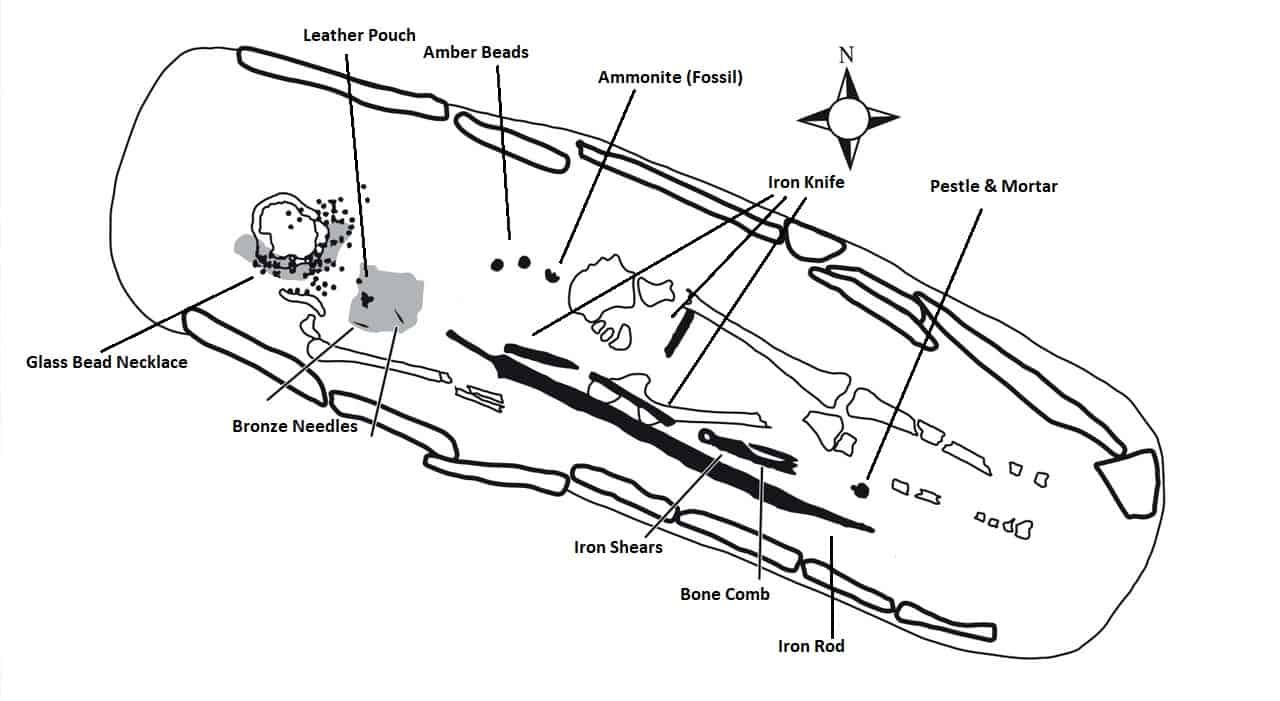
The ‘Pagan Lady’ of Peel Castle, St Patrick’s Isle
St Patrick’s Isle is connected to the Isle of Man mainland by a causeway. It housed a Celtic monastery, of which the 11th century round tower remains.
The first fortification, which was of timber and earthworks, was built in the 11th century by Norwegians, under the rule of King Magnus Barefoot. The castle also encloses the 13th century St Germain’s Cathedral.
Excavations carried out between 1982-87 revealed a Christian cemetery and details of King Magnus Barefoot’s fortification.
10th century Pagan Viking graves were discovered within the Christian cemetery. One of them, known as the Pagan Lady was an especially rich burial dating to c. 950.
The grave goods accompanying the burial consisted of a leather Pouch which had contained bronze needles, three iron knives, a pair of iron shears, a bone comb, a small stone pestle and mortar, an Ammonite fossil, two amber beads, a necklace of high-quality glass beads, and an iron rod wrapped in a goose wing.
Initially, the iron rod was interpreted as a spit, and the assumption was that the buried woman had been a high status head of a domestic household.
This idea changed when Neal Price examined the iron rod and pointed out its resemblance to iron staffs found in graves such as the female inhumation from Veka, Vangen sogn, and those at Birka, which suggests that the Pagan Lady may have been a practitioner of seiđr.





